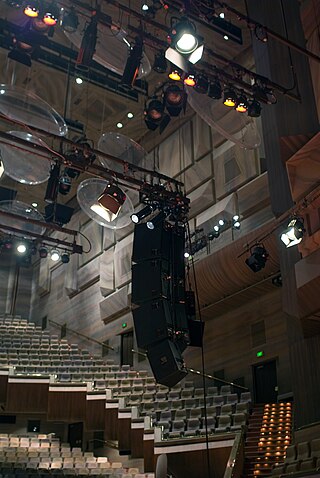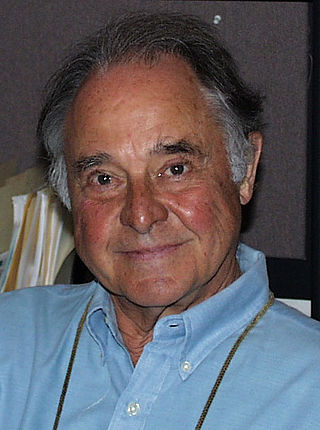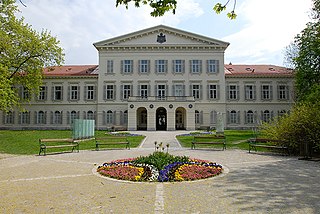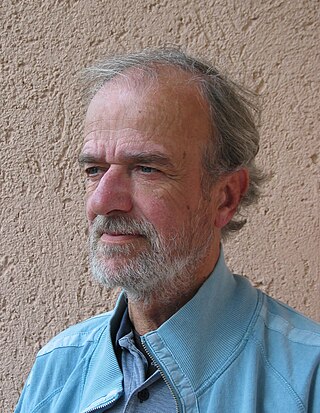External links
| People | ||
|---|---|---|
| Programs and instruments | ||
| Places | ||
| Techniques | ||
| Compositions | ||
| Techniques | ||
|---|---|---|
| By country | ||
| Active organizations | ||
| Inactive organizations | ||
The Institute of Electronic Music and Acoustics (IEM) is a multidisciplinary research center within the University of Music and Performing Arts, Graz, (Austria).
Research activities are concentrated mainly in digital signal processing, audio engineering, and psycho acoustics, e.g. projects in analysis and syntheses of sound and loudness perception.
The IEM is very active in the field of Artistic Research. As part of the 'Doctor Artium' program of the University of Music and Performing Arts Graz, several art-based doctorates have been supervised at the IEM. Also, since 2011 IEM staff members have won seven PEEK grands for various artistic research projects, each with a run-time of three years. The PEEK program is a highly competitive research program for artistic research in Austria, and is funded by the Austrian Science Fund (FWF).
At IEM, compositions students are trained in musical acoustics, sound synthesis, algorithmic composition, and real-time systems. The institute has established an audio engineering curriculum in collaboration with the Graz University of Technology. The most important aspects of these courses is to bring technology and artistic creativity closer together.
The IEM offers a 3-year bachelor and a 2-year master program in Computer Music. The main focusses of this three-year program – the first of its kind in Austria – are:
Some of the offered courses are taking place in collaboration with the Institute of Composition, Music Theory and Conducting (Institute 1) of the Graz University of Music and Dramatic Arts
Bachelor/Master study in cooperation with the Graz University of Technology
Bachelor/Master study in cooperation with the University of Graz
IEM provides technology and know-how to composers and musicians in the creation and realization of their works. Since 1990, IEM has collaborated with guest artists (including Olga Neuwirth, Peter Ablinger, Bernhard Lang) in the production and performance of more than 80 new compositions. In this process, many international partnerships have been established.
Since 2014 the IEM is also offering an Artist-In-Residence program, which enables the selected artist to work at the facilities of the IEM for a duration of 5 months. The selected Artists-In-Residence are:
The IEM publishes the series "Contributions to Electronic Music".
The IEM is involved in several Open Source projects. It is currently hosting the main community portal and the mailing-lists for Pure Data
Computer music is the application of computing technology in music composition, to help human composers create new music or to have computers independently create music, such as with algorithmic composition programs. It includes the theory and application of new and existing computer software technologies and basic aspects of music, such as sound synthesis, digital signal processing, sound design, sonic diffusion, acoustics, electrical engineering, and psychoacoustics. The field of computer music can trace its roots back to the origins of electronic music, and the first experiments and innovations with electronic instruments at the turn of the 20th century.

Digital music technology encompasses digital instruments, computers, electronic effects units, software, or digital audio equipment by a performer, composer, sound engineer, DJ, or record producer to produce, perform or record music. The term refers to electronic devices, instruments, computer hardware, and software used in performance, playback, recording, composition, mixing, analysis, and editing of music.

IRCAM is a French institute dedicated to the research of music and sound, especially in the fields of avant garde and electro-acoustical art music. It is situated next to, and is organisationally linked with, the Centre Pompidou in Paris. The extension of the building was designed by Renzo Piano and Richard Rogers. Much of the institute is located underground, beneath the fountain to the east of the buildings.

Acoustical engineering is the branch of engineering dealing with sound and vibration. It includes the application of acoustics, the science of sound and vibration, in technology. Acoustical engineers are typically concerned with the design, analysis and control of sound.
IEM can refer to:

Max Vernon Mathews was an American pioneer of computer music.

Pure Data (Pd) is a visual programming language developed by Miller Puckette in the 1990s for creating interactive computer music and multimedia works. While Puckette is the main author of the program, Pd is an open-source project with a large developer base working on new extensions. It is released under BSD-3-Clause. It runs on Linux, MacOS, iOS, Android and Windows. Ports exist for FreeBSD and IRIX.

Olga Neuwirth is an Austrian contemporary classical composer, visual artist and author. She gained fame mainly through her operas and music theater works, which often deal with topical and decidedly political themes of identity, violence and intolerance.

John M. Chowning is an American composer, musician, discoverer, and professor best known for his work at Stanford University, the founding of CCRMA - Center for Computer Research in Music and Acoustics in 1975 and his development of the digital implementation of FM synthesis and the digital sound spatialization while there.
Kyma is a visual programming language for sound design used by musicians, researchers, and sound designers. In Kyma, a user programs a multiprocessor digital signal processor (DSP) by graphically connecting modules on the display of a Macintosh or Windows computer.

An audio engineer helps to produce a recording or a live performance, balancing and adjusting sound sources using equalization, dynamics processing and audio effects, mixing, reproduction, and reinforcement of sound. Audio engineers work on the "technical aspect of recording—the placing of microphones, pre-amp knobs, the setting of levels. The physical recording of any project is done by an engineer…"
Stanford University has many centers and institutes dedicated to the study of various specific topics. These centers and institutes may be within a department, within a school but across departments, an independent laboratory, institute or center reporting directly to the dean of research and outside any school, or semi-independent of the university itself.
Gareth Loy is an American author, composer, musician and mathematician. Loy is the author of the two volume series about the intersection of music and mathematics titled Musimathics. Loy was an early practitioner of music synthesis at Stanford, and wrote the first software compiler for the Systems Concepts Digital Synthesizer. More recently, Loy has published the freeware music programming language Musimat, designed specifically for subjects covered in Musimathics, available as a free download. Although Musimathics was first published in 2006 and 2007, the series continues to evolve with updates by the author and publishers. The texts are being used in numerous math and music classes at both the graduate and undergraduate level, with more current reviews noting that the originally targeted academic distribution is now reaching a much wider audience. Music synthesis pioneer Max Mathews stated that Loy's books are a "guided tour-de-force of the mathematics of physics and music... Loy has always been a brilliantly clear writer. In Musimathics, he is also an encyclopedic writer. He covers everything needed to understand existing music and musical instruments, or to create new music or new instruments. Loy's book and John R. Pierce's famous The Science of Musical Sound belong on everyone's bookshelf, and the rest of the shelf can be empty." John Chowning states, in regard to Nekyia and the Samson Box, "After completing the software, Loy composed Nekyia, a beautiful and powerful composition in four channels that fully exploited the capabilities of the Samson Box. As an integral part of the community, Loy has paid back many times over all that he learned, by conceiving the (Samson) system with maximal generality such that it could be used for research projects in psychoacoustics as well as for hundreds of compositions by a host of composers having diverse compositional strategies."
The Brooklyn College Center for Computer Music (BC-CCM) located at Brooklyn College of the City University of New York (CUNY) was one of the first computer music centers at a public university in the United States. The BC-CCM is a community of artists and researchers that began in the 1970s.
Sound and music computing (SMC) is a research field that studies the whole sound and music communication chain from a multidisciplinary point of view. By combining scientific, technological and artistic methodologies it aims at understanding, modeling and generating sound and music through computational approaches.
The Institute of Sonology is an education and research center for electronic and computer music based at the Royal Conservatoire of The Hague in the Netherlands.

The University of Music and Performing Arts Graz, also known as Kunstuniversität Graz (KUG) is an Austrian university. Its roots can be traced back to the music school of the Akademischer Musikverein founded in 1816, making it the oldest university of music in Austria.
Richard Charles Boulanger is a composer, author, and electronic musician. He is a key figure in the development of the audio programming language Csound, and is associated with computer music pioneers Max Mathews and Barry Vercoe.
Marko Ciciliani is a composer, audiovisual artist and performer.

Giorgio Nottoli is an Italian composer, musician and academic.